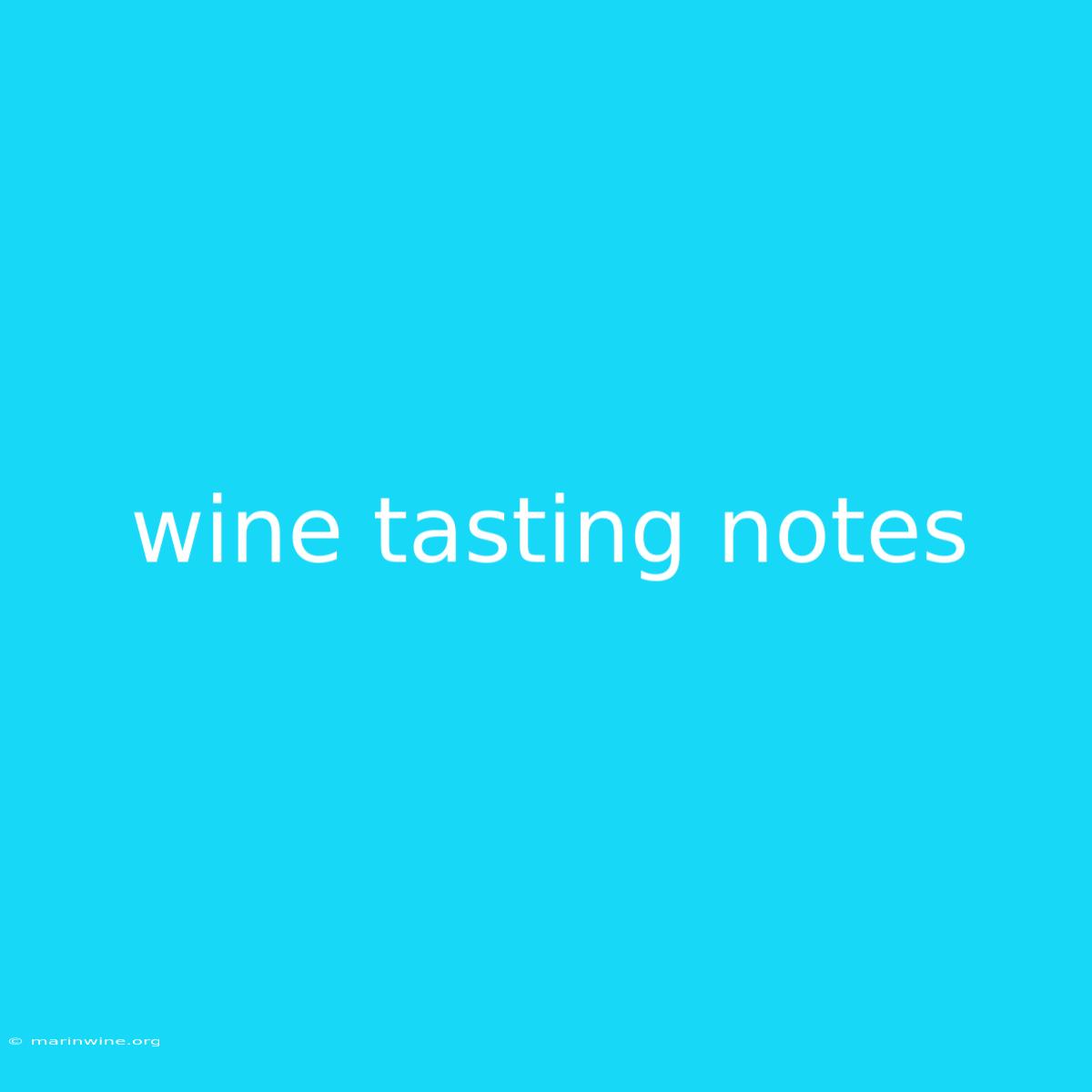Uncorking the Secrets: A Guide to Wine Tasting Notes
Editor’s Note: This guide on wine tasting notes was published today.
Why are wine tasting notes important?
Wine tasting notes are the language we use to describe the complex flavors and aromas of wine. They act as a roadmap for wine lovers, allowing them to navigate the vast world of wine with confidence. Whether you're a novice or a seasoned connoisseur, understanding wine tasting notes can enhance your appreciation and enjoyment of every glass.
A Deep Dive into the Notes:
This guide explores the key elements of wine tasting notes, providing you with the tools to confidently analyze and describe your own wine experiences.
Key Takeaways:
| Element | Description |
|---|---|
| Appearance | Color, clarity, viscosity |
| Aroma | Primary (fruit), Secondary (fermentation), Tertiary (aging) |
| Taste | Sweetness, acidity, tannins, alcohol, body |
| Finish | Lingering flavors, length, complexity |
The Journey of a Wine's Flavor Profile:
Understanding the different stages of a wine's flavor development is essential for interpreting its tasting notes.
Appearance:
- Color: Red wines can range from deep purple to brick red, depending on the grape variety and age. White wines can be pale yellow, straw-colored, or even golden.
- Clarity: A clear wine suggests careful production and aging. Cloudiness can indicate a faulty bottle.
- Viscosity: Swirling the wine in your glass reveals its viscosity, or 'legs'. A thicker, more viscous wine usually indicates higher alcohol content or higher levels of glycerin.
Aroma:
- Primary Aromas: These are the fruit flavors derived from the grape variety. They are often the most prominent aromas in young wines.
- Secondary Aromas: Developed during fermentation, these aromas include notes of yeast, bread, spice, and floral hints.
- Tertiary Aromas: These aromas arise from aging, often adding complexities like vanilla, leather, tobacco, and earthy notes.
Taste:
- Sweetness: The level of sweetness is determined by the residual sugar remaining after fermentation.
- Acidity: Acidity provides freshness and balance, contributing to a wine's overall structure.
- Tannins: Found in red wines, tannins contribute to bitterness, astringency, and structure. They are responsible for the drying sensation in your mouth.
- Alcohol: The alcohol content of a wine can affect its weight and body.
- Body: This refers to the overall mouthfeel, ranging from light and delicate to full and rich.
Finish:
- Length: This refers to how long the flavors remain on your palate after swallowing.
- Complexity: A complex finish features a variety of flavors that linger and evolve.
Further Analysis: Decoding the Wine's Story
Wine tasting notes are more than just a list of flavors; they tell a story of the wine's origin, production, and aging process. Analyzing the notes helps us understand the wine's unique characteristics and appreciate its journey from vine to glass.
Here's how to go beyond simple descriptions:
- Consider the terroir: What is the climate and soil like where the grapes were grown?
- Think about the grape variety: What are the typical characteristics of that grape?
- Factor in the winemaking techniques: How was the wine aged? What type of oak was used?
- Evaluate the overall balance: Is there a harmonious balance between the various flavors?
Frequently Asked Questions:
Q: How do I develop my own wine tasting vocabulary?
A: Start by tasting a variety of wines, paying attention to the flavors and aromas. Use online resources, books, and wine tasting events to expand your vocabulary.
Q: What is the best way to write my own tasting notes?
A: Keep your notes concise and descriptive. Use specific terms to convey the flavors, aromas, and overall impression of the wine.
Q: Should I focus on positive or negative tasting notes?
A: Be honest about your experience. Focus on both positive and negative aspects of the wine. This helps you learn and grow as a wine enthusiast.
Tips for Improving Your Wine Tasting Skills:
- Start with a clean palate: Avoid strong-flavored foods or drinks before tasting.
- Use a tasting glass: A tulip-shaped glass helps concentrate the aromas.
- Swirl the wine: This allows the wine to breathe and release its aromas.
- Smell the wine: Take time to identify the primary, secondary, and tertiary aromas.
- Taste the wine: Swirl it around your mouth and pay attention to all the flavors and sensations.
- Reflect and record: Write down your observations and impressions in your tasting journal.
Conclusion:
Wine tasting notes offer a powerful tool for understanding and appreciating the intricacies of the wine world. By mastering the vocabulary and techniques, you can elevate your wine experiences and embark on a journey of discovery.

